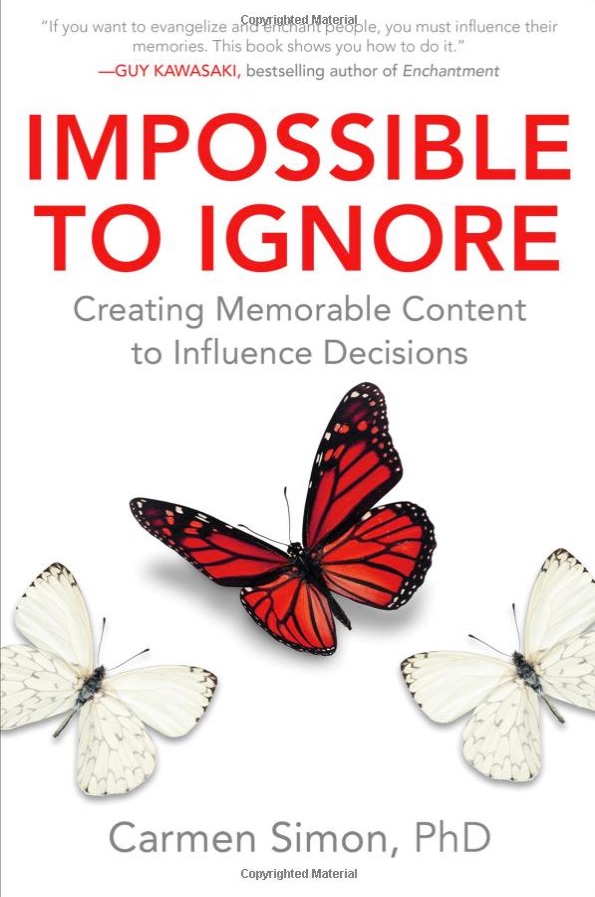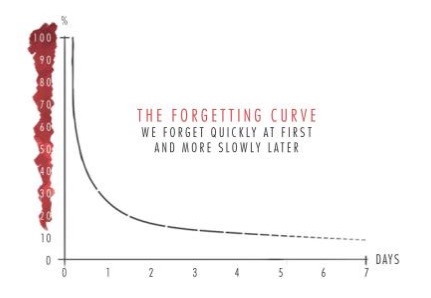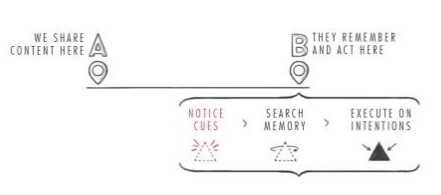 Right off the top, this is not the book you expect. This is no a paint-by-number, 15 steps to being a better communicator, lightweight feel-good-about-your-limitations book for snowflakes. This is a book that expects you to learn and remember the keys to memory. This is a deep book, but clear in its ability to guide you through an area of learning that far too few have mastered. It is an honest representation of the author’s voice, a voice that I’ve personally enjoyed listening to a number of conventions. In short, if you’re ready for the next step in making your business communications something that your audience remembers and acts upon, it’s here.
Right off the top, this is not the book you expect. This is no a paint-by-number, 15 steps to being a better communicator, lightweight feel-good-about-your-limitations book for snowflakes. This is a book that expects you to learn and remember the keys to memory. This is a deep book, but clear in its ability to guide you through an area of learning that far too few have mastered. It is an honest representation of the author’s voice, a voice that I’ve personally enjoyed listening to a number of conventions. In short, if you’re ready for the next step in making your business communications something that your audience remembers and acts upon, it’s here.
On first glance you might underestimate author Carmen Simon. She is not tall, is always impeccably dressed, full of smiles and exuberance. But that surface level impression quickly gives way to a deeper appreciation of the depth of her knowledge and the ease in which she is able to apply it to relatable communication situations. Her work is clinical without being sterile, deep without being obscure, and actually applies a surprising amount of wit and humor that is part of the message, not merely pasted-on for relief.
So many of her lectures have made me wish I’d been able to take better notes, something I could share with peers, something I could go back to when my own failing memory can’t. I needed  her notes, specific and complete, and those essential illustrations that set the memory clues you can act on later.
her notes, specific and complete, and those essential illustrations that set the memory clues you can act on later.
And here you have it, at close to 300 pages, my copy of which is already highlighted and dog-eared for future reference.
Memory, as Simon explains, is essential to successful communications. Without memory, your target will not act on your message, will not have established the cues and reactions you need them to develop. If you are forgettable, you fail. Learning to be unforgettable is one of the most important activities any communicator can undertake.
Simon takes you through the complex subject of memory, or rather the process by which ideas, instruction, and similar directives can be composed so that your audience will fail to forget your message. It’s a fairly layered approach, and not too challenging for the layman. I’m an English/Comp Sci. major with very little recollection of my college psych classes, but I never felt at lost in her prose.
Yes, as many other reviewers have noted, this is not a light read. But it’s not really a heavy read either. It’s just that so many books in this area tend to scrape the surface, try to limit what you have to apply to just the basics. (Seriously, how many times must we be subjected to “Five Simple Ways to Succeed” style books that carry as much weight as the average Cosmopolitan article.) There is a lot here but I anticipated rather than dreaded the remaining pages in the book. I’d chalk that up to both Simon’s own voice, and the manner in which she practices what she’s teaching throughout.
This is a book that will change your communication style, and the results your communications will foster, for the better.
Ric Bretschneider
May 19, 2016
—
Note for Kindle readers: I read an advance proof of the book that did not have spot-color in the illustrations. It never occurred to me that I was missing a color highlight, the illustrations were all easy to connect to the relative prose. This would likely be a similar experience to reading on the Kindle, as I verified that with a Kindle sample of the book on my Oasis. Having been able to compare the final published version with that greyscale version I can assure you that you’re not missing out on essential information. Color is generally replaced with a grey and that stands out against what is mostly line drawing anyway. So if you prefer the ebook experience, I’d say there’s nothing to hold you back from reading that version. Plus, you can download the sample for free to try it out!
Disclosure: As should be obvious, this review was based on a pre-production proof that was provided to me without charge.

